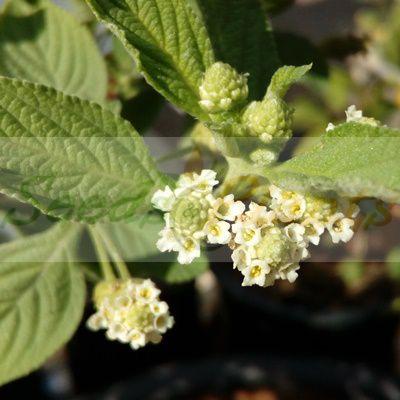🌿 Herbal Quick Facts
Medicinal Info
- 🌍 Origin / Region: Central Africa, East Africa, Southern Africa
- 🌿 Medicinal Part: Leaf, Root, Stem
- 🍵 Herbal Preparation: Essential Oil, Infusion / Tea, Inhalation, Juice, Ointments/Creams, Poultice
- ⚕️ Healing System: African Traditional Medicine
Growth Traits
- 🌱 Life Cycle: Perennial
- 🌾 Plant Type: Shrub
- 🔁 Fruiting Needs: Needs Only 1 Plant
- 🦋 Pollinator Method: Attracts Bees, Attracts Butterflies, Attracts Moths
- 🪴 Growth Habit: Upright
- 🌿 Foliage Type: Evergreen
- 🌸 Flower Color: Creamy White
Growing Requirements
- 🌞 Sun Exposure: Full Sun
- 💧 Water Needs: Avoid Overwatering, Low Water
- ☀️ Growing Conditions: Drought Tolerant
- 🟤 Soil Preference: Clay, Loam, Sandy, Tolerant of most soils, Well-Drained
Fever Tea – 10 Seeds
(Lippia javanica)
R30.00
In Africa Fever Tea is a well known medicinal plant.
Common names: fever tea, lemon bush (English); koorsbossie, beukesbossie, lemoenbossie (Afrikaans); mutswane, umsutane (Swati); inzinziniba (Xhosa); umsuzwane, umswazi (Zulu); musukudu, bokhukhwane (Tswana).
Indoor Sowing: Early Spring.
Direct Sowing: Early Summer.
Only 4 left in stock
🌿 Herbal Quick Facts
Medicinal Info
- 🌍 Origin / Region: Central Africa, East Africa, Southern Africa
- 🌿 Medicinal Part: Leaf, Root, Stem
- 🍵 Herbal Preparation: Essential Oil, Infusion / Tea, Inhalation, Juice, Ointments/Creams, Poultice
- ⚕️ Healing System: African Traditional Medicine
Growth Traits
- 🌱 Life Cycle: Perennial
- 🌾 Plant Type: Shrub
- 🔁 Fruiting Needs: Needs Only 1 Plant
- 🦋 Pollinator Method: Attracts Bees, Attracts Butterflies, Attracts Moths
- 🪴 Growth Habit: Upright
- 🌿 Foliage Type: Evergreen
- 🌸 Flower Color: Creamy White
Growing Requirements
- 🌞 Sun Exposure: Full Sun
- 💧 Water Needs: Avoid Overwatering, Low Water
- ☀️ Growing Conditions: Drought Tolerant
- 🟤 Soil Preference: Clay, Loam, Sandy, Tolerant of most soils, Well-Drained
Fever Tea (Lippia javanica) is a strongly fragrant, medicinal plant indigenous to southern and tropical parts of Africa. The plant belongs to the Verbenaceae family. It is a 1 – 2 m high multi-stemmed, woody erect shrub. The leaves are hairy with noticeable veins and when crushed gives off a strong aroma. The plant produces small cream flowers. These flowers are arranged in dense, rounded flower heads. In Africa it is a well known medicinal plant.
Common names: fever tea, lemon bush (English); koorsbossie, beukesbossie, lemoenbossie (Afrikaans); mutswane, umsutane (Swati); inzinziniba (Xhosa); umsuzwane, umswazi (Zulu); musukudu, bokhukhwane (Tswana)
Fever Tea Medicinal Uses:
- Treatment of Coughs, colds, influenza, asthma and pleurisy. .
- Treatment of Malaria, measles, skin disorders, scratches and bites.
Growing Fever Tea
Indoor Sowing: Early Spring.
Direct Sowing: Early Summer.
- It grows relatively fast and prefers sunny areas, but can also grow in partial shade.
- The plant tolerates a wide variety of soil types. It prefers a well-drained loam soil.
- The seeds can be sown in trays in early spring or directly into the beds in early summer.
- Surface sow the seeds and lightly cover the seeds with sowing mix, clean coarse sand, or milled bark.
- Place the tray in a warm, bright area, to germinate.
- Water daily to ensure that the growing medium remains moist.
- The optimum temperature for seed germination is between 15 °C – 25 °C.
- Although the shrub is somewhat drought tolerant, it grows best when watered regularly.
- It can be grown in containers.
Does this plant have medicinal uses?
Traditionally, Fever Tea has a history of use in African Traditional Medicine. Seeds are sold for cultivation purposes only.
Disclaimer
Medicinal Information:
All medicinal information on this website is for educational and informational purposes only and may not be construed as medical advice. The information is not intended to replace medical advice or treatment offered by healthcare professionals.
Seeds, Plants, Plant Cuttings, Geophytes and Dried Herbs:
In some countries and provinces, certain plants are deemed as invasive and are not allowed to be planted at all, whilst some plants are allowed to be grown only in certain areas or provinces. The onus is on you as the buyer to familiarize yourself with the regulations pertaining to your location, before purchasing any of our seeds, plants, plant cuttings, geophytes or dried herbs. We will not be held liable, should you purchase any seeds, plants, plant cuttings, geophytes or dried herbs. from us which are prohibited in your country or province.




















